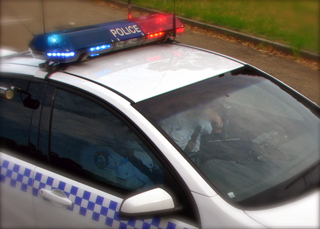Emergency spectrum could cost govt $220m

The government would miss out on $220 million in revenue if it decided to provide emergency services with spectrum in the 700MHz band, network technology company Motorola has estimated.

(On the job ... image by Highway Patrol Images, CC2.0)
The government is expected to make well over $1 billion in the auction of 126MHz of spectrum in the 700MHz band in the digital dividend, the company said in a submission (PDF) to the Senate Committee on the Capacity of Communication Networks and Emergency Warning Systems to deal with emergencies and natural disasters.
Motorola said that if the government did give 20MHz of this spectrum to emergency services, the company estimated that it would lose $220 million. But this was insignificant in the face of how much disasters cost the government, it said.
"When whatever claim [telcos] make is compared to the real costs of the Black Saturday fires (in excess of $4 billion according to the Victorian Bush Fire Royal Commission) and the Brisbane element of the Queensland floods (in excess of $30 billion according to IBIS) the difference is stark," Motorola said. "Indeed, the estimate for the entire contribution of the mobile telecommunications industry to the Australian economy is $6.7 billion, whereas the total cost of crime and disasters tops $33 billion per annum."
Only 2 per cent of the total spectrum available for 3G and 4G networks would be required for dedicated emergency services networks, said Motorola, and that while telcos had offered to provide spectrum to emergency services, the services could only be assured by having the government dedicate spectrum.
"Crudely, even the most altruistic provider is faced with market pressures and profit goals, whereas the principles underpinning public safety communities are more utilitarian," the company said. "The improved efficiency afforded to the entire community should and must outweigh the cost to the mobile phone industry."
However, it would be unlikely that the government would miss out on the full $220 million, because as there will ultimately be less spectrum available, the prices the government could expect to receive for the remaining spectrum would be higher, Motorola said.
The Police Federation of Australia reiterated its plea for an allocation of the 700MHz in its submission (PDF). Emergency services currently utilise spectrum in the 400MHz band, but as the spectrum is narrow, it is unable to handle data communication and is limited to voice communications only.
"To be frank, a 16-year-old with a smartphone has a more advanced communications capability than many first responder police officers or emergency services personnel, which is a disgrace in a technologically savvy country like Australia," the Police Federation said.
Having the services managed by a big telco like Telstra or Optus is not an option, according to the federation, as "bitter experience" has shown that commercial telco services cannot be relied on in emergency situations.
"They are not set up to provide the kind of guaranteed, fail-safe, secure system these emergency services must have. This leaves our public safety agencies at the mercy of Telstra whose systems are not built to 'importance level 1', which police and emergency services need for reliable, robust communications that survive natural disasters."
Should emergency services be given spectrum that can carry data, the federation said it could be used to stream video from an emergency scenes, download high-resolution maps in bushfire situations, transfer audio and video in criminal surveillance operations and for downloading building plans for fire fighters when that building is on fire.
The submission is accompanied by letters from state and territory police commissioners, the Australasian Fire and Emergency Service Authorities Council, Queensland Premier Anna Bligh and former NSW Premier Kristina Keneally all calling for emergency services to be allocated spectrum in the 700MHz band.
The government has approached emergency service organisations with the alternative of providing some of the 800MHz spectrum specifically for emergency services. The Australasian Fire and Emergency Service Authorities Council is open to the idea, but the Police Federation of Australia said only the 700MHz spectrum would suffice.